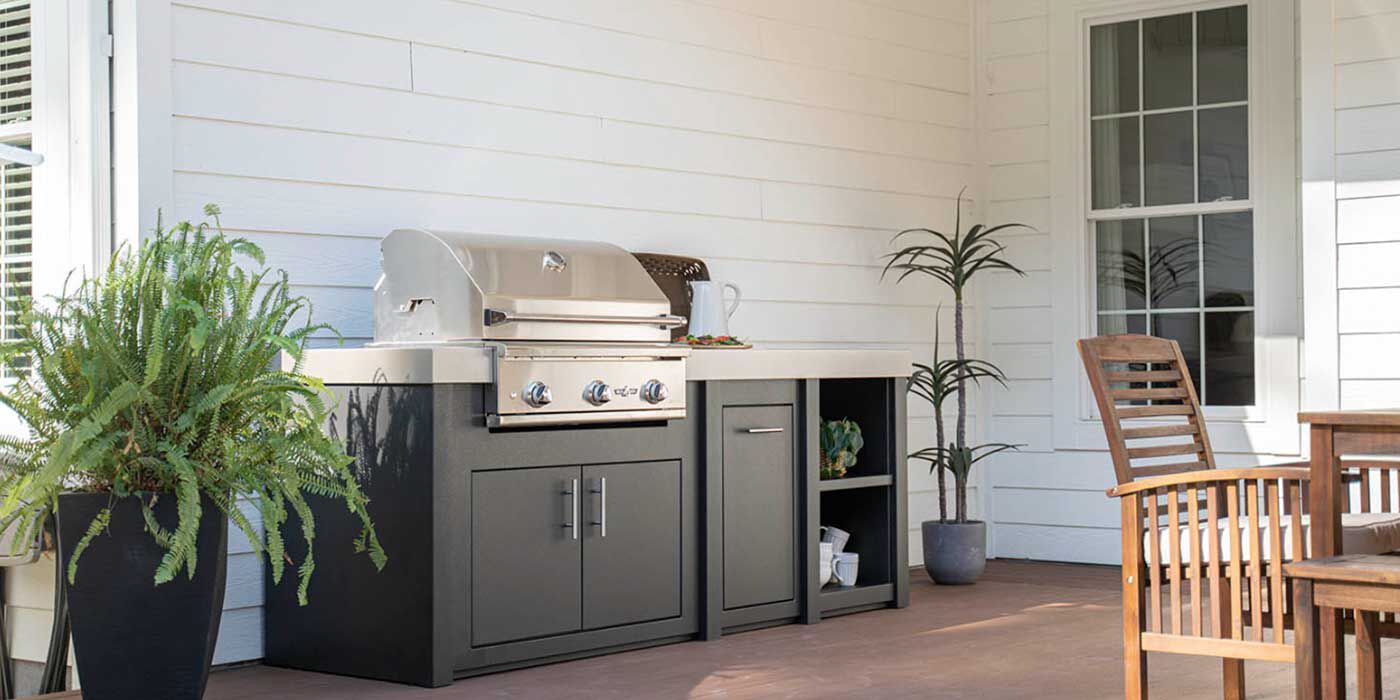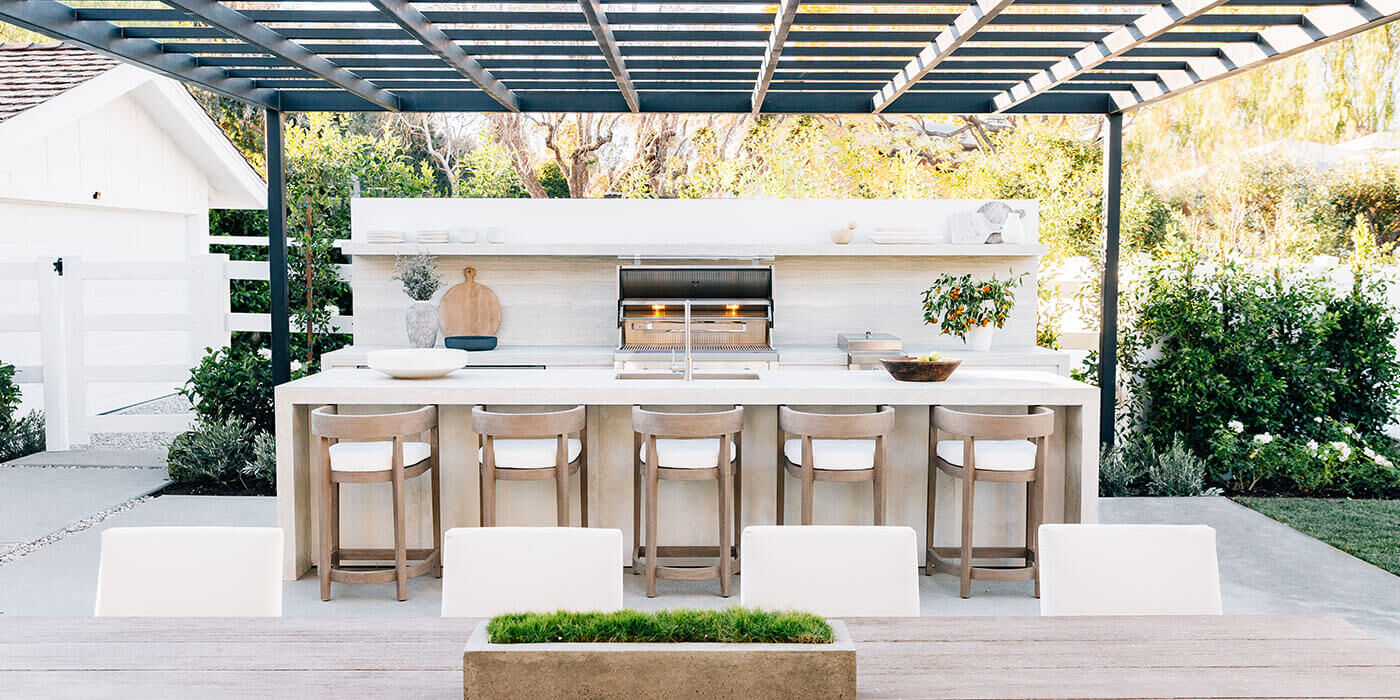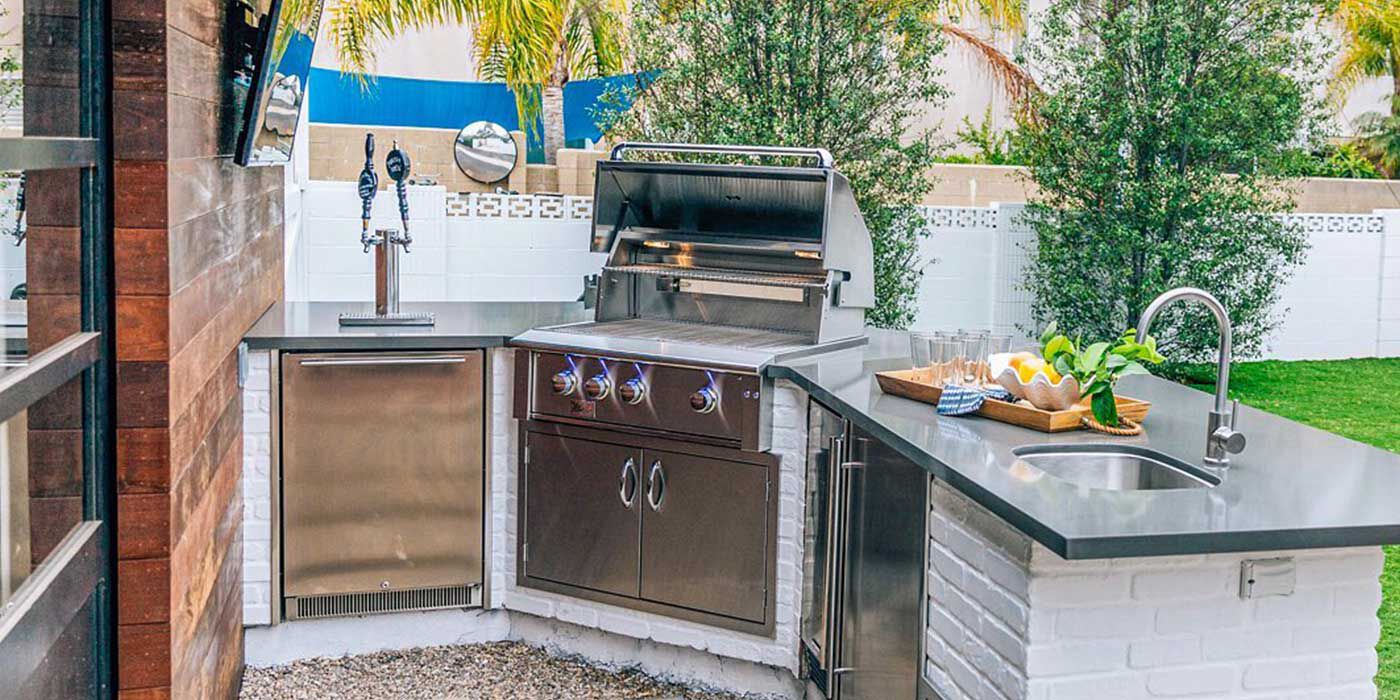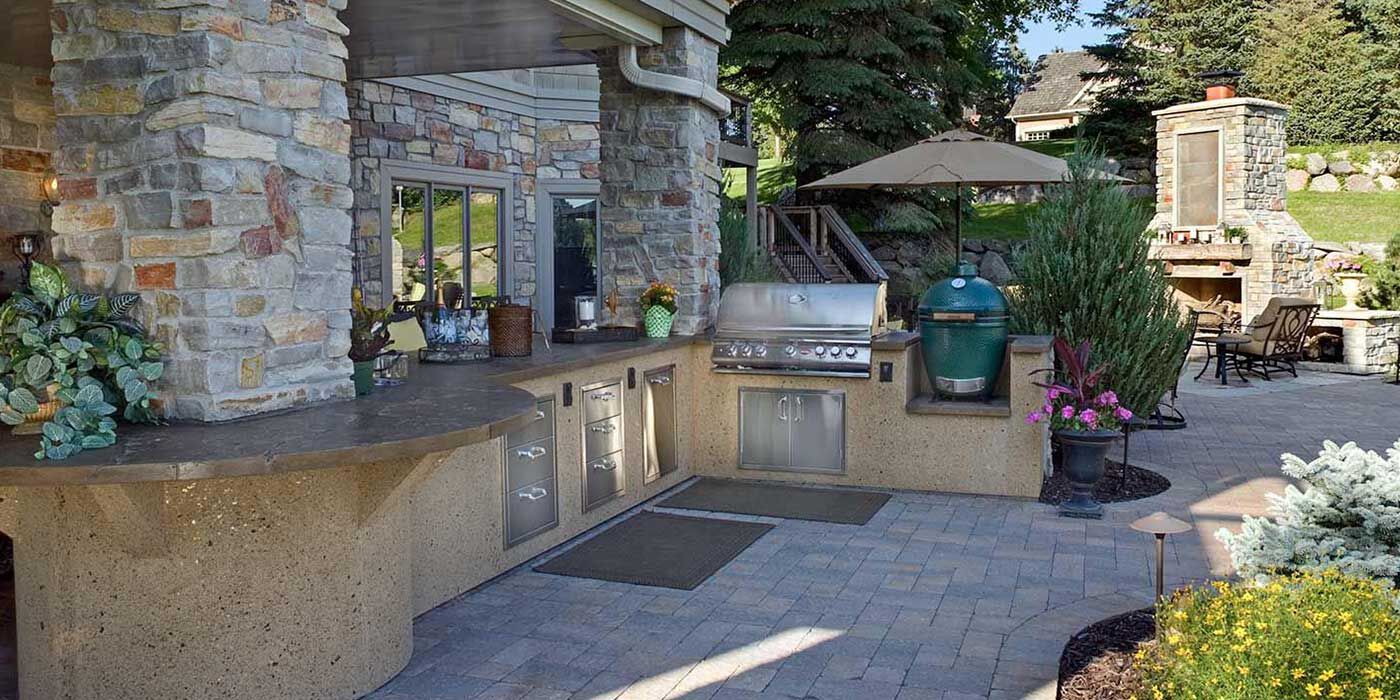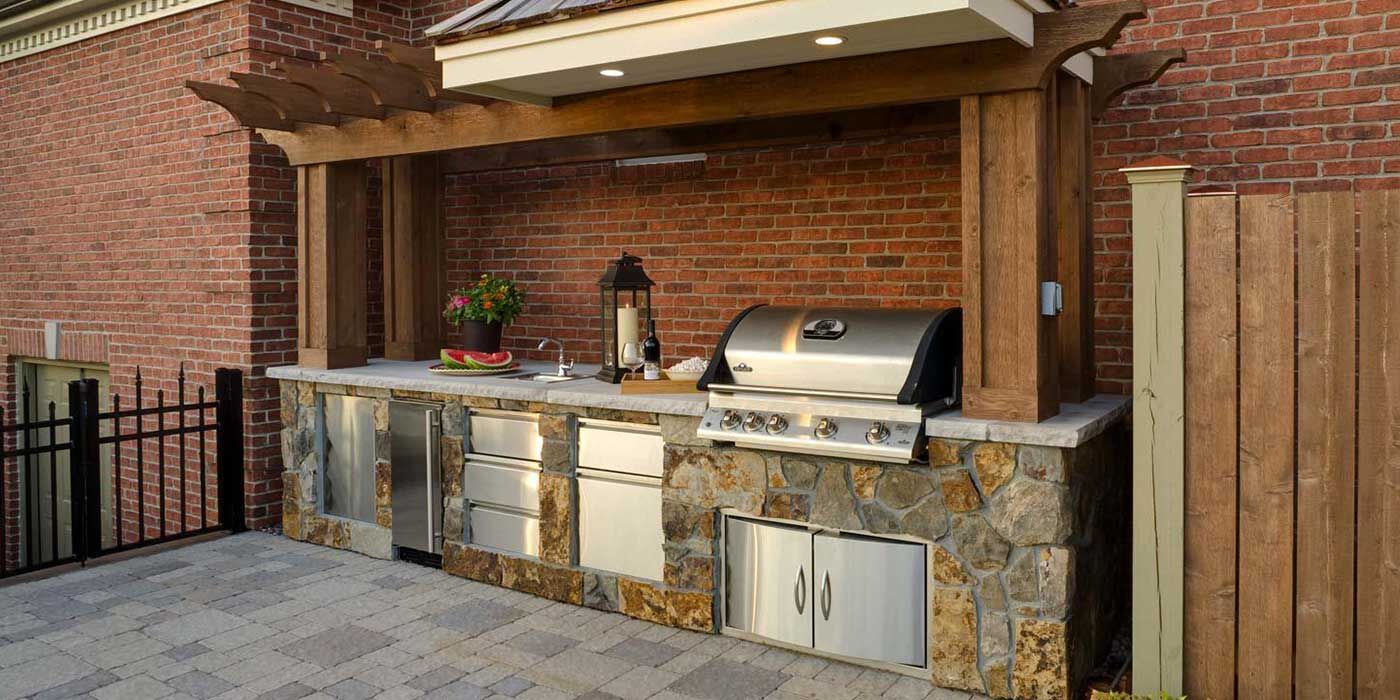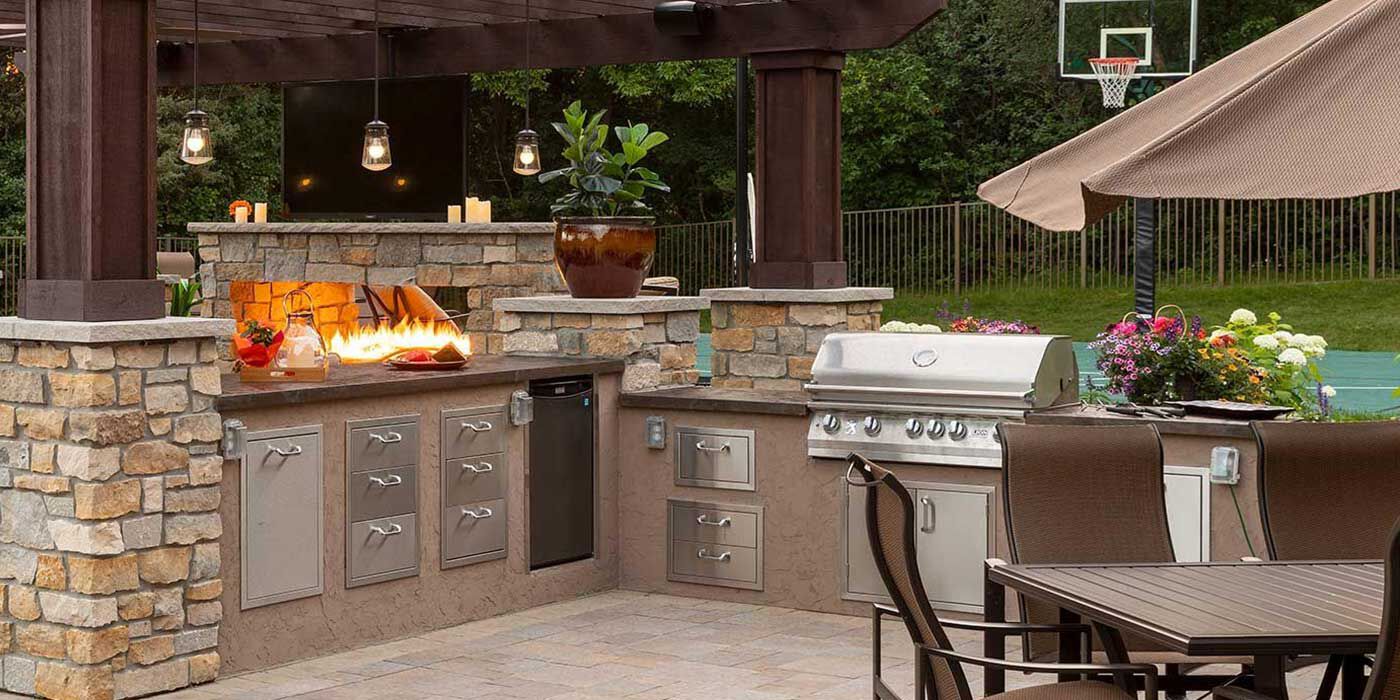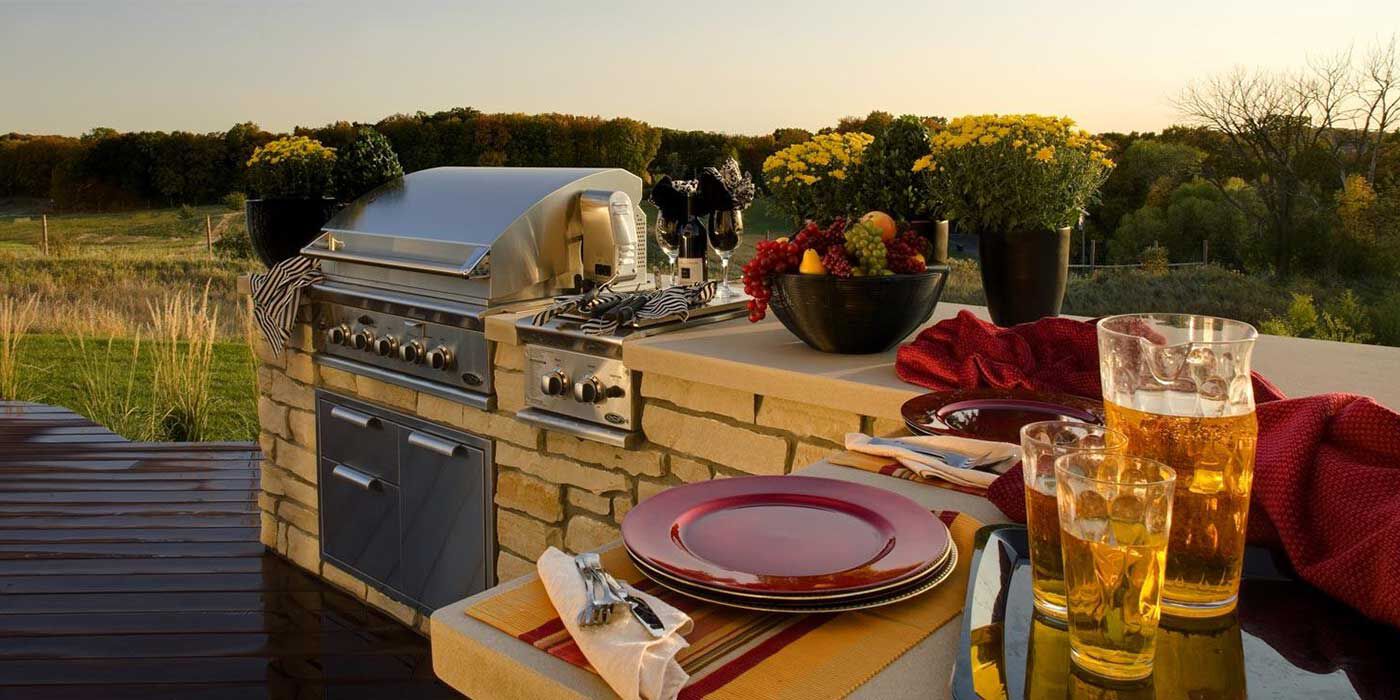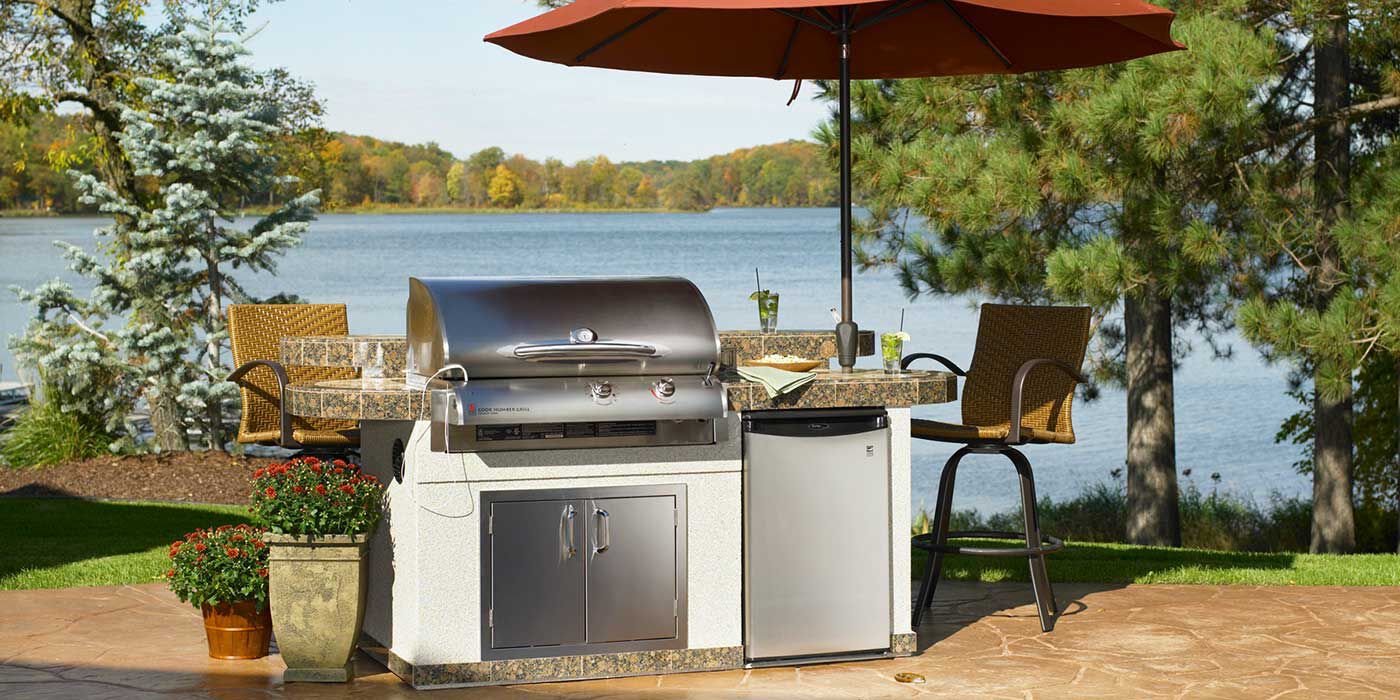By: Tiffany Kurilla, NFI Certified Master Hearth Professional
Last Updated: June 26, 2025
Designing your dream outdoor kitchen is one of the best ways to extend your living space outside. Whether you’re a weekend BBQ enthusiast or devoted to dining alfresco, investing in a prefab, modular, or custom outdoor kitchen area transforms your backyard into a functional culinary hub that’s perfect for entertaining.
In this buying guide, we’ll walk you through all the important decisions you need to make and share some expert tips on outdoor kitchen design, so you can create a cooking space that suits your needs, budget, and lifestyle.
Assess Your Outdoor Space & Needs
Start by evaluating your outdoor space. Consider factors like the available square footage, sun exposure, and whether it’s covered by a pergola or awning.
Do you want a custom outdoor kitchen built into a patio, a freestanding setup on your deck, or a prefab unit that can be placed almost anywhere?
Also, determine the ideal outdoor kitchen layout. What’s your ideal cooking area, dining area, and workspace size?
Common configurations include:
- L-shaped outdoor kitchen islands for ample counter space
- Linear designs for compact areas
- U-shaped islands with a dining or seating area for hosting guests
Pro Tip:
Your kitchen island can’t be installed underneath a covered patio without a grill vent hood. It can also never be installed within an enclosed patio.
Buying a Prefab Grill Island vs Building a Custom Outdoor Kitchen
When it comes to outdoor kitchen design, the first big decision is choosing between a custom outdoor kitchen or a prefab or stock BBQ grill island.
Custom outdoor kitchens offer maximum versatility and personalization. Want a specially shaped countertop finished with flecks of gold? You can do it — it just might cost a bit more. Whatever you do, make sure to use non-combustible materials, and protect your grill with an insulated grill jacket.
On the other end of the spectrum, a prefab outdoor kitchen island balances cost and customization. Stock outdoor kitchen manufacturers offer plenty of pre-made options and layouts, allowing you to find something you like without breaking the bank.
Select Strong, Outdoor-Rated Materials
Your outdoor kitchen will be exposed to the elements. Make sure you choose weather-resistant, high-quality, and durable building materials.
Some of the best materials to use include:
- Stainless steel: The gold standard for outdoor-rated cabinetry and cooking appliances due to its superior corrosion resistance
- Stone or concrete: Incredibly strong and heat-resistant
- Marine-grade polymer or powder-coated metal: These materials hold up well against sun, rain, and temperature changes without discoloring.
Choose the Right Outdoor Appliances
The grill is the main attraction in any outdoor kitchen setup, but there are many add-ons that can expand your cooking skills.
- Gas grill or built-in grill: Most homeowners opt for a stainless steel, outdoor-rated gas grill for its versatility, ease of use, and clean burning. Consider whether you want to run a Natural Gas line or use Propane.
- Charcoal grills and pellet grills: Add distinct smoky flavors and offer alternative outdoor cooking methods.
- Side burners: Ideal for preparing sauces or side dishes without going inside.
- Pizza oven: A wood-fired or gas-powered pizza oven adds an exciting element to outdoor cooking.
- Griddle: Great for breakfast or hibachi-style meals.
- Rotisserie: Perfect for slow-cooked meats and poultry.
When shopping, prioritize weatherproof, outdoor-rated units with corrosion-resistant materials.
Cross-ventilation is a must. Air needs to be able to move through your kitchen island so gases can escape.
Make sure there is at least 8-inches of space between your appliances and service access doors in key areas (i.e., below your grill).
Pro Tip:
You may also want to consider buying a grill with a built-in safety system. A safety system adds effective protection against gas buildup and uncontrolled combustion.
Plan for Proper Utilities and Installation
Successfully building an outdoor kitchen requires careful planning — and the help of a professional.
- Gas line: If you’re using Natural Gas, you’ll need a licensed professional to safely route a gas line to your outdoor kitchen.
- Propane tanks: You can hook up a Propane tank yourself, but it will require safe storage.
- Electricity: You’ll need a power supply for ice makers, outdoor refrigerators, lights, and outlets.
- Water lines: Hire a professional to hook up a water line (and optional water heater) to your outdoor sink.
Pro Tip:
Don’t overlook drainage, ventilation, and lighting. A poorly lit cooking area can be both frustrating and unsafe.
How Will You Handle Delivery and Installation?
Have a plan in place for moving your kitchen island from its delivery location to its installation location. Depending on the size of the island, you may need to have a forklift on hand to get it off the delivery truck.
Also, make sure your installer knows what utilities your outdoor kitchen requires, as well as the total BTU ratings of all your appliances to ensure your gas supply can handle the additional output.
What Kind of Maintenance is Required for an Outdoor Kitchen?
Cover your grill when it’s not in use. If you live in a colder climate, you’ll also want to winterize your outdoor kitchen at the end of the fall — turn off your gas supply, clear your gas lines, and bring your refrigerator into the garage.
Check Out These Custom Outdoor Kitchens for Inspiration
Outdoor Kitchen Planning Tips from the Experts in Fire
FAQs
Look for high-quality products from customer-backed brands, including PGS, Wildfire Outdoor Living, American Made Grills, Summerset, Bull Outdoor Products, and Lynx.
That depends on your local regulations. If your kitchen involves gas, electrical, or plumbing work, or if it’s built under a structure like a pergola, permits are often required.
Check with your local building authority to avoid future hassle.
Absolutely. With proper weather-resistant materials and other outdoor heating solutions, like patio heaters and fire pits, many homeowners use their outdoor kitchens throughout the year, especially in milder climates.
Costs vary widely:
Basic setups: $3,000–$10,000
Mid-range: $10,000–$20,000
Luxury kitchens: $20,000+ (with features like a pizza oven and appliances from high-end brands, like Lynx, Summerset, or Wildfire Grills).
We're Here to Help
Ready to get started on your outdoor kitchen? Reach out to our NFI certified experts today at 800.919.1904 and we’ll help you plan your project.
More Resources
If you're thinking about buying a ready-to-finish outdoor kitchen, read our buying guide for everything you need to know!
Explore these 7 Swoon-Worthy Outdoor Spaces to get inspired to create your own!
Check out 3 easy ways to incorporate fire into your tiny outdoor space!
 |
Tiffany Kurilla, Technical Sales Representative, has five years of experience at Woodland Direct. As an NFI-Certified Master Hearth Professional, she’s recognized for her deep knowledge of fireplace products and safety standards. Tiffany’s dedication and mastery earned her the title of Woodland’s top sales representative in 2021 and 2022. Outside of work, Tiffany is an avid traveler, exploring national and international destinations. Her favorite spot to visit? The Happiest Place on Earth — Disney World! Call Tiffany or one of our experts in fire at 800.919.1904. |
